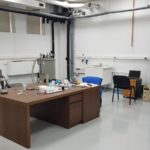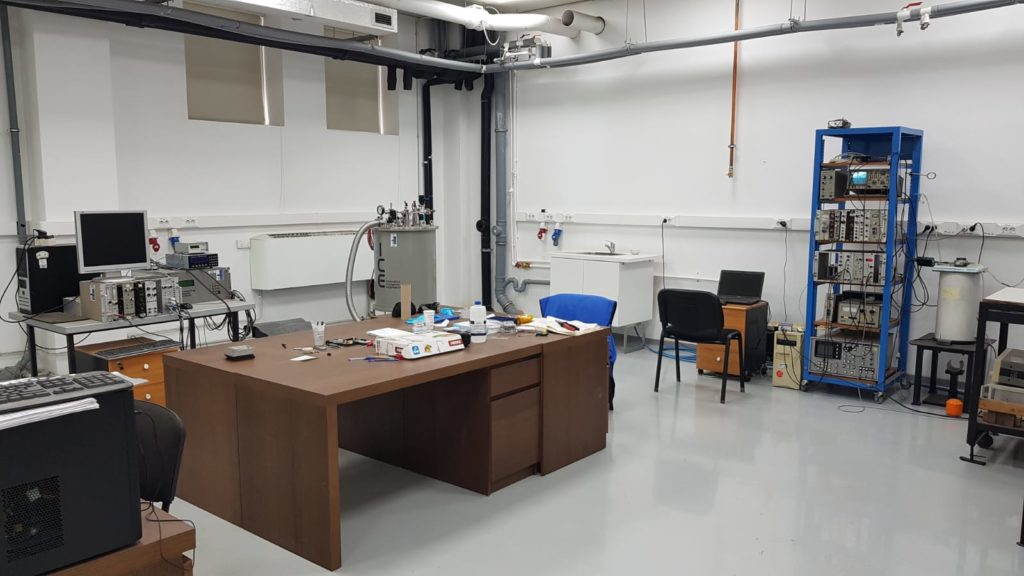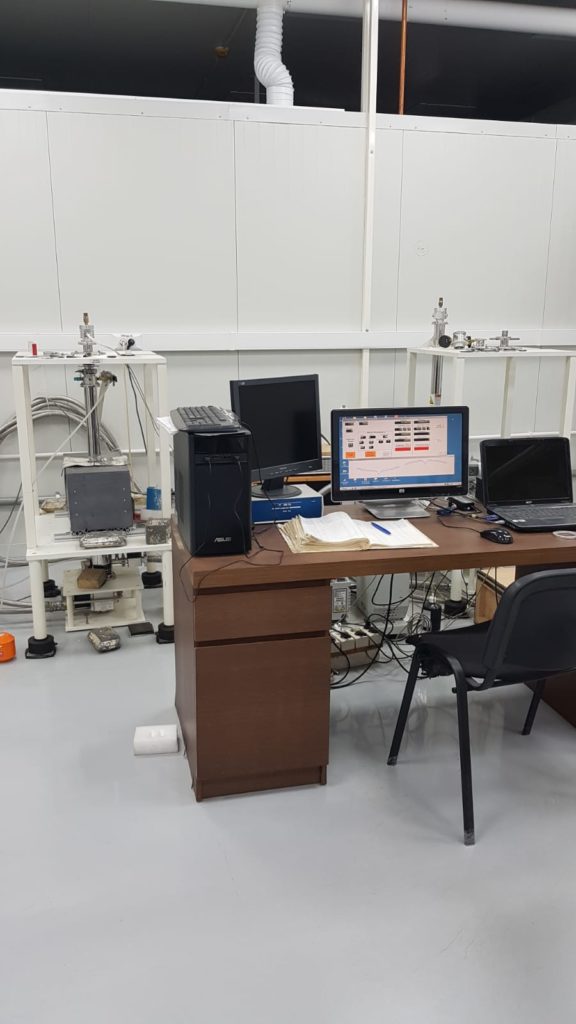
The entire range of Mӧssbauer spectrometers, working both in transmission and backscattering geometry (e.g. the CEMS technique, for investigation of nanometer thick films and multilayers) are available. Most spectrometers are equipped with cryostats (including a cryomagnet) for measurements at low temperatures and in an applied magnetic field. Ovens can also be adapted for measurements in vacuum or in a controlled atmosphere.
Characteristics:
– Temperature range: from 5 K to 300 K (in close cycle cryostats), from 300 K to 800 K in ovens with controlled atmosphere, between 80 K and 300 K through CEMS.
– High magnetic field up to 7 T (cryomagnet with He bath) as well as low fields of up to 0.1 T (permanent magnets adapted on Mossbauer cryostats) can be applied. CEMS in applied magnetic fields of up to 5000 Oe and applied electric fields (voltage supply of up to 300 V) can be performed.
– Source-absorber relative speed ranges up to 20 mm/s
– Mainly 57Fe but also 151Eu spectroscopies can be performed.
Applications: Mӧssbauer spectroscopy is an extremely effective method of injvestigation in may scientific and technological field, as for example in chemistry and catalysis, metallurgy, investigation of magnetic materials in relation to electronic and atomic configurations, sensoristics and bio-medicine, archeology and mineralogy, etc. Information about the local atomic and electronic configurations around the central Fe (or Eu) atom/ion, about phase distribution and crystallinity, about the Fe positions in the lattice (site occupation and inversion degree), the valence and spin state as well as on the magnetic state (orientation and value of the magnetic moment), local distortions and the degrees of ordering, magnetic relaxation phenomena, blocking temperatures, transition temperatures, spin transitions, local interactions at surface and interface, etc., can be obtained. It allows investigations on all types of samples (massive crystalline or amorphous, coordination complexes, metal-organic, doped polymers, glassy structures, powders, corrosion products, nanoparticles, including for bio-medical applications, nanometric thin layers and multilayers, tapes, nanowires.


Copyright © 2025 National Institute of Materials Physics. All Rights Reserved